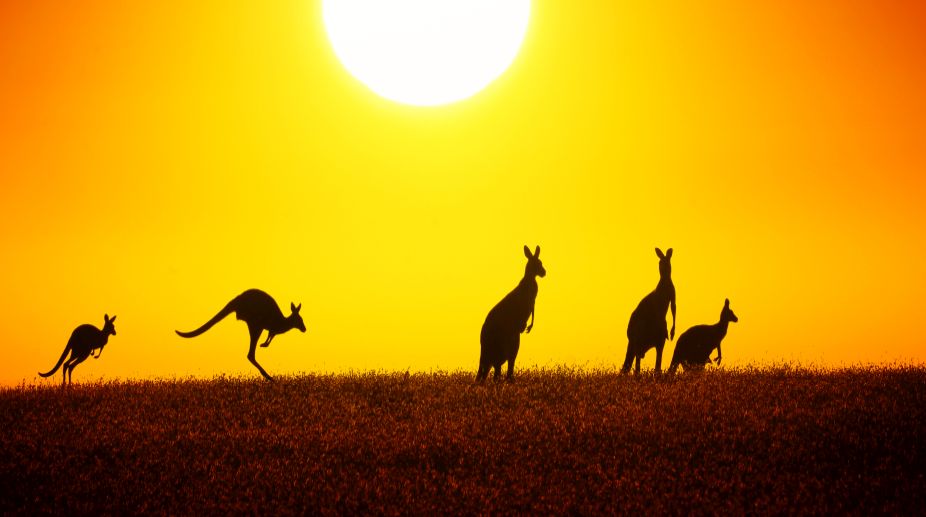Ancient poop of some of the huge and astonishing creatures that once roamed Australia indicates the primary cause of their extinction around 45,000 years ago was likely a result of humans, not climate change, a new study has found.
Led by Monash University in Australia and the University of Colorado Boulder in the US, researchers used information from a sediment core drilled in the Indian Ocean off the coast of southwest Australia to help reconstruct past climate and ecosystems on the continent.
Advertisement
The core contains chronological layers of material blown and washed into the ocean, including dust, pollen, ash and spores from a fungus called Sporormiella that thrived on the dung of plant-eating mammals, said CU Boulder Professor Gifford Miller.
Miller, who participated in the study led by Sander van der Kaars of Monash University, said the sediment core allowed scientists to look back in time, in this case more than 150,000 years, spanning Earth's last full glacial cycle.
Fungal spores from plant-eating mammal dung were abundant in the sediment core layers from 150,000 years ago to about 45,000 years ago, when they went into a nosedive, said Miller.
"The abundance of these spores is good evidence for a lot of large mammals on the southwestern Australian landscape up until about 45,000 years ago," he said.
"Then, in a window of time lasting just a few thousand years, the megafauna population collapsed," Miller said.
The Australian collection of megafauna some 50,000 years ago included 1,000-pound kangaroos, two-tonne wombats, 25-foot-long lizards, 400-pound flightless birds, 300-pound marsupial lions and Volkswagen-sized tortoises.
More than 85 per cent of Australia's mammals, birds and reptiles weighing over 100 pounds went extinct shortly after the arrival of the first humans, said Miller.
The ocean sediment core showed the southwest is one of the few regions on the Australian continent that had dense forests both 45,000 years ago and today, making it a hotbed for biodiversity, said Miller.
"It's a region with some of the earliest evidence of humans on the continent, and where we would expect a lot of animals to have lived," he said.
"Because of the density of trees and shrubs, it could have been one of their last holdouts some 45,000 years ago.
There is no evidence of significant climate change during the time of the megafauna extinction," he said.
Scientists have been debating the causes of the Australian megafauna extinctions for decades.
Some claim the animals could not have survived changes in climate, including a shift 70,000 years ago when much of the southwestern Australia landscape went from a wooded eucalyptus tree environment to an arid, sparsely vegetated landscape.
Others have suggested the animals were hunted to extinction by Australia's earliest immigrants who had colonised most of the continent by 50,000 years ago, or a combination of overhunting and climate change, said Miller.
The study was published in the journal Nature Communications.











